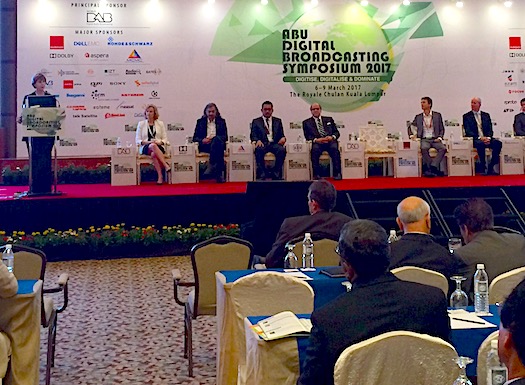In the first session of this year’s Digital Broadcasting Summit in Malaysia, the ABU’s Secretary General Javad Mottaghi told delegates, “broadcasters must commit to a digital future.”
Using all the possibilities of digital, broadcasters should aim to pursue innovation and rich content according to Mottaghi.
Commercial Radio Australia’s Joan Warner said radio is the most robust and reliable communications channel. It’s free, accessible and innovative, and now it is also digital.
“When Aust was considering a digital platform we considered all the technologies.
We chose DAB+ because some standards were not right for us. We’re confident Australia made the right choice.
“DAB+ is becoming the most popular digital radio standard around the world,” said Warner
Warner also spoke about the LG Stylus smartphone, which is the world’s first DAB phone. “It has become LG’s top selling phone in Australia. The smartphone can receive all radio stations free to air via DAB… there are no streaming costs for the listeners.”
As well as listening to radio via the smartphone, audiences can also click and interface with the station or advertisers using a specially designed app which integrates the DAB+ signal and IP.
“My message to broadcasters is let’s not sit on our hands and let someone else take our industry away from us,” she said, urging broadcasters to take control, act together as an industry and be proactive in getting governments to reserve spectrum for future broadcasting needs.
DRM’s Ruxandra Obreja (pictured below) explained the latest developments in the DRM digital radio broadcast standard.
“Digital Radio Mondiale is the only open standard that works across all bands.”
“Along with the benefits of digitising the broadcast signal, one of the other benefits of DRM is energy savings, which are about one tenth of the cost of analog transmissions, saving tens of thousands of dollars per year,” said Obreja.
Comparing FM and DRM transmission Obreja pointed out that there are “9 boxes for FM, but just 3 for DRM, reducing cooling issues and costs.”
Where is DRM and what has been happening?
One of the world’s largest deployments of DRM is in India. The national broadcaster has invested the equivalent of quarter of a million US Dollars in DRM transmissions.
“In January, when I was there at a meeting, the Broadcasting Minister endorsed and supported the roll out of DRM in India… The first stage of rolling out transmitters has begun,” she said.

